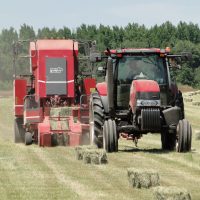What exactly is organic farming? Organic farming covers a lot of ground. In a nutshell, it means that the production systems used are managed to respond to site-specific conditions. This is done by integrating cultural, biological, and mechanical practices that are meant to foster the cycling of resources, as well as promote ecological balance and conserve biodiversity. This is the definition that the USDA uses, but there’s a lot more to it than that.
To start, organic farming uses things such as cover crops, green manures, animal manures, and crop rotations. These are used to fertilize the soil and maintain the soil’s long-term health as well as maximize any biological activity, as there’s an emphasis on biodiversity within the agricultural system and its surroundings. In order to manage weeds, insects, and diseases, organic farming also uses biological control and crop rotations, among other techniques.
Other important aspects of organic farming include the use of rotational grazing and mixed forage pastures for livestock. Alternative healthcare for animal wellbeing is also important. Organic farms tend to try and reduce off-farm and external inputs, as well as eliminate synthetic pesticides and fertilizers. Pretty much anything with hormones or antibiotics in them are undesirable. Finally, there’s an increased focus on utilizing renewable resources, water and soil conservation, and management practices that aim to restore, maintain, and ultimately enhance the ecological balance on the farm.
All of this put together leads to a balance in the ecosystem that is closely modeled after nature by encouraging natural predators to manage pests. Recycling nutrients and increasing plant densities to block weeds. This leads to the entire farm working together as one large entity, as opposed to many different parts. Adding livestock and poultry into the mix just increases the potential for diversification and integration.
Ultimately, the whole goal of organic farming is to grow food that is free of the hormones, pesticides, and antibiotics we find in many other food products. On the side, organic farming is also less harsh on the environment compared to traditional farming, and there’s loads of research to back this up. Further research also shows how organic farming has the potential to be just as productive and economically competitive as conventional farming.








Read 0 comments and reply